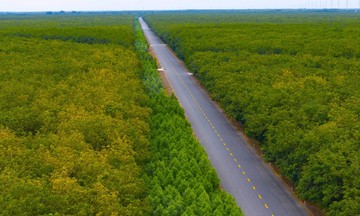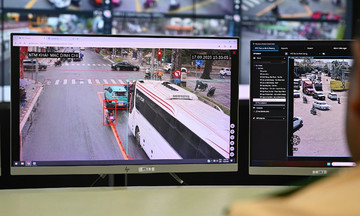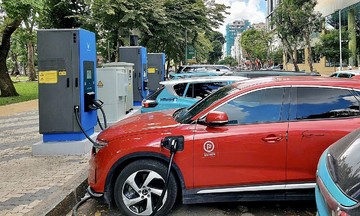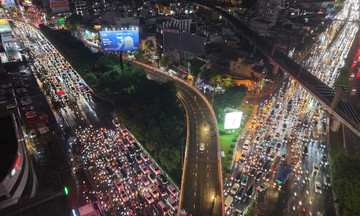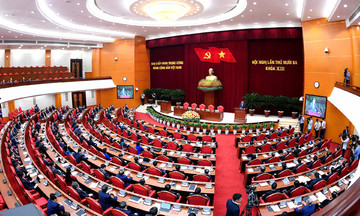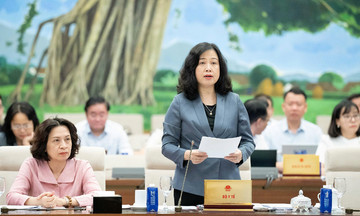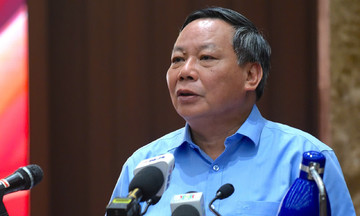This information was presented by VinSpeed High-Speed Rail Investment and Development Joint Stock Company at a seminar on green transportation connecting Can Gio with downtown Ho Chi Minh City, organized by the City Institute for Research and Development on 22/8.
The elevated metro line will begin on Nguyen Van Linh Street (between the intersection of Nguyen Thi Thap Street and Ly Phuc Man Street, Tan Thuan Ward, former District 7) and terminate at the Can Gio coastal urban area. The line will have two stations (Tan Thuan and Can Gio) and a 39-hectare depot near the coastal urban area. The section crossing the Soai Rap River is planned to have a separate cable-stayed bridge, not sharing the existing Can Gio Bridge.
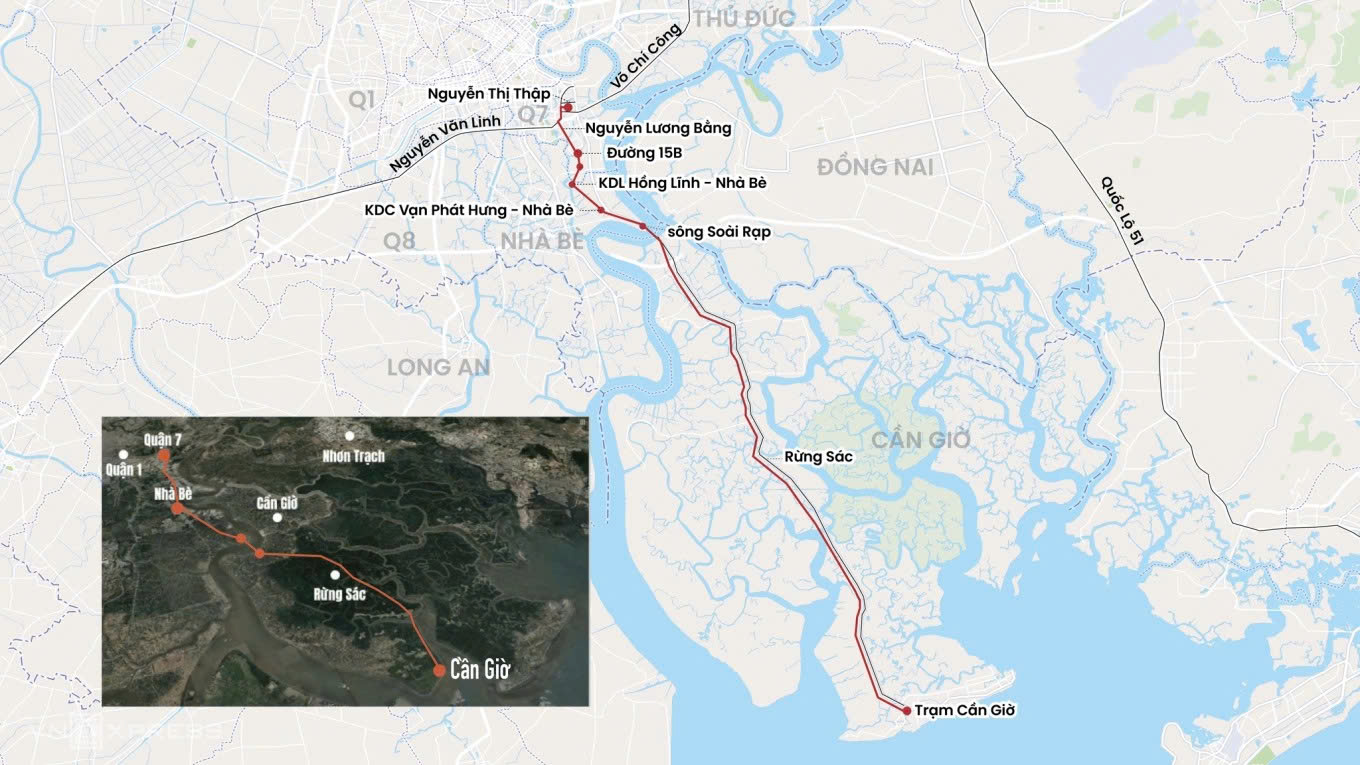 |
Planned route of the metro line connecting downtown Ho Chi Minh City to Can Gio. Graphics: Hoang Thanh |
According to VinSpeed, the total investment for the project is 2.93 billion USD (over 76,000 billion VND). The company commits to covering all construction, equipment, project management, and contingency costs, with a capital structure of 15% equity and 85% debt. The State will be responsible for the site clearance cost of over 7,600 billion VND.
Compared to the previous plan with a speed of 250 km/h, the current project has increased the speed to 350 km/h, featuring a double track with a 1,435 mm gauge. This speed is more than three times faster than the Ben Thanh - Suoi Tien metro line (110 km/h).
Mr. Nguyen Anh Tuan, General Director of VinSpeed, stated that the 350 km/h speed was chosen to anticipate future trends, because "if designed at a lower speed, it will be difficult to upgrade later." He emphasized that this is the maximum speed, and the actual operating speed can be adjusted. "This is a challenging timeline and considered a record for a metro line; however, we are confident in implementing it according to plan," he said.
Since Vietnam has no experience with this type of project, VinSpeed said it has consulted models in many countries and conducted geological and topographical surveys along the route. The company expects to start construction in Quarter IV of this year and complete it by early 2028.
 |
Mr. Nguyen Anh Tuan, General Director of VinSpeed. Photo: Giang Anh |
At the seminar, some experts considered the proposed plan a bold idea, paving the way for new thinking in metro and railway development. However, implementation requires overcoming many challenges, including technical standards, technology, and operation. Therefore, calculations need to be made carefully, comparing multiple options to choose the most suitable approach.
Mr. Truong Tien Trien, Deputy Head of the Ho Chi Minh City Urban Development Management Board, believes the metro line will create a breakthrough in connecting Can Gio, which is currently only accessible by ferry. However, he wondered if the speed of 350 km/h might make it "difficult for passengers to enjoy the unique natural scenery in Can Gio." He also suggested adding an intermediate station at Binh Khanh to increase accessibility and support the Transit-Oriented Development (TOD) model.
Dr. Tran Du Lich, Head of the Ho Chi Minh City Metro Network Development Advisory Board, stated that a metro line connecting to Can Gio is necessary. However, environmental protection must be ensured during project implementation. "The route must not infringe on the Can Gio International Biosphere Reserve, so even if the route curves, it must follow the reserve's boundaries," he said.
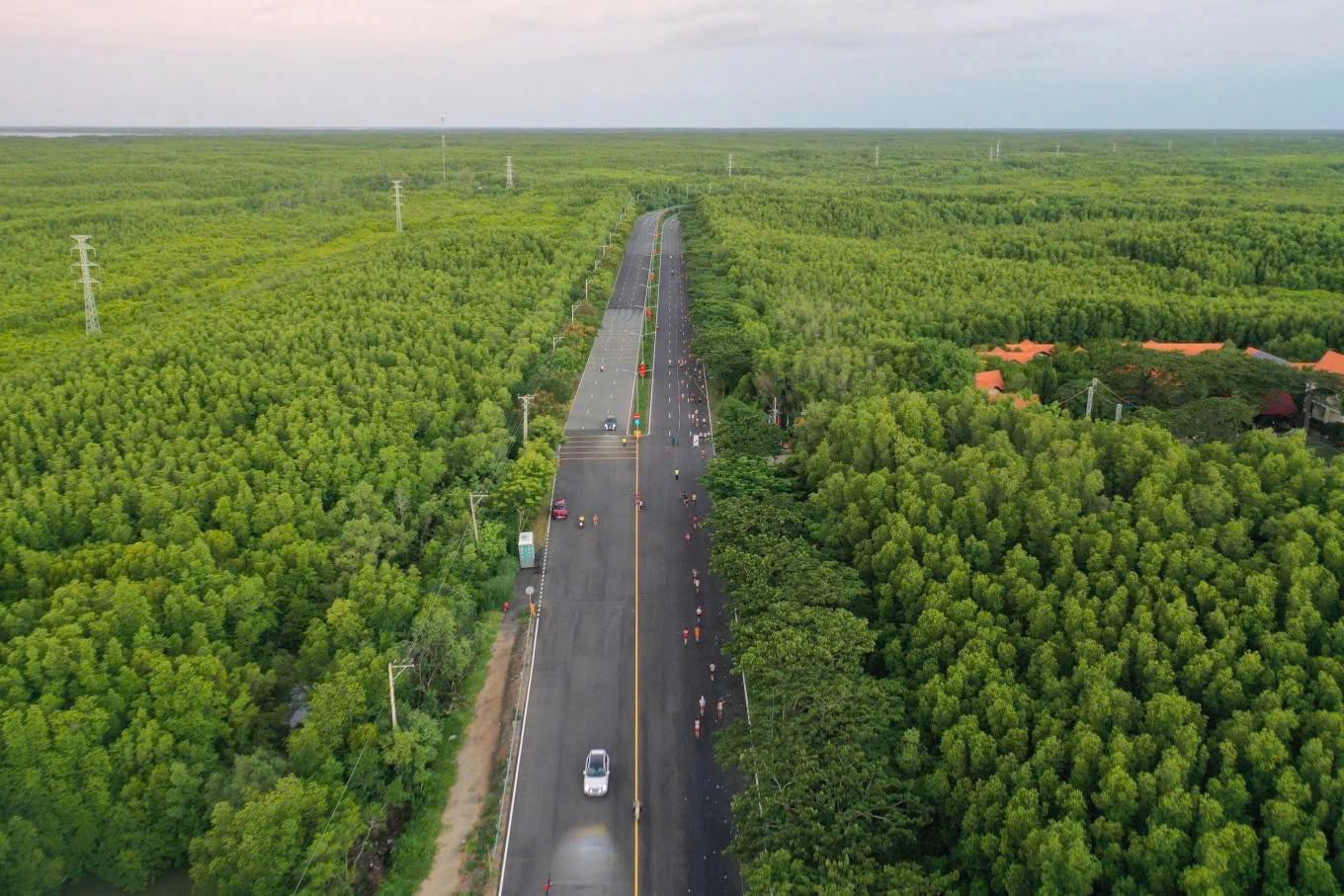 |
Rung Sac Road, Can Gio District, 9/2024. Photo: Quynh Tran |
Dr. Phan Huu Duy Quoc, Chairman of the Board of Directors of Construction Corporation No. 1, who participated in the construction of the Ben Thanh - Suoi Tien metro line, noted that the construction process needs to arrange service roads and construction sites appropriately to minimize environmental impact. For the river crossing section, instead of building a separate bridge, he suggested considering an underground tunnel.
"Tunneling under a river or urban area is not much different, while we already have experience from the Ben Thanh - Suoi Tien line," he said.
Can Gio is about 50 km from downtown Ho Chi Minh City, covering an area of over 71,300 hectares, 70% of which are mangrove forests and rivers. Currently, the primary connection is via the Binh Khanh ferry.
In addition to the Can Gio metro line, Ho Chi Minh City's metro network plan includes 11 lines, with 7 lines totaling 355 km expected to be completed by 2035. Metro Line 2 (Ben Thanh - Tham Luong) will begin construction later this year, laying the groundwork for the simultaneous implementation of multiple lines starting in 2027.
Giang Anh





